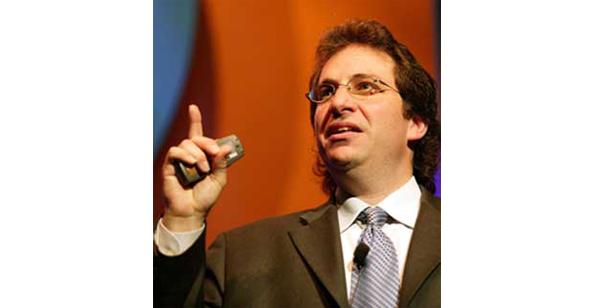What is Computer Hacking?
Computer hacking is the practice of modifying
computer hardware and software to accomplish a goal outside of the creator’s original purpose. People who engage in
computer hacking activities are often called hackers. Since the word “hack” has long been used to describe someone who is incompetent at his/her profession, some hackers claim this term is offensive and fails to give appropriate recognition to their skills.
http://www.wisegeek.com/what-is-computer-hacking.htm
Top 10 Hackers
1. Jonathan James:

James rose to fame when he became the first underage to sent to prison for cyber-crime, i.e. hacking. By the time he was being sentenced, he was only 16 years old. To him, his online exploits were simply for fun and not anything else. His main targets were blue chip corporate organizations. He managed to install a backdoor virus in the system of a government agency – DTRA. Using the backdoor, he was able to read sensitive e-mail messages and capture usernames and passwords of the agency employees stored in the database. In addition, he managed to hack into NASA computers and did away with application programs valued at $1.7 million. On realizing this, NASA was compelled to switch off its computer systems costing them approximately $41,000 in the process.
2. Adrian Lamo:

Adrian Lamo was made famous after managing to break into various corporate organizations’ computer systems, i.e. New York Times and Microsoft Inc. He was nicknamed “homeless hacker” given that he utilized computers in public libraries and cyber cafes to hack into other networks. Lamo’s work mainly consisted of finding flaws in corporate organizations security systems and alerting them of it. Some of the organizations that Lamo managed to hit were Yahoo, Citigroup, Bank of America and Cingular. What made Lamo’s activities illegal is that he was not hired by any of the companies to find and rectify flaws in their systems. After breaking into New York Times local area network, he was able to include himself as part of the network administrators thus giving him access to personal data, i.e. social security numbers.
3. Kevin Mitnnick:

Unlike other hackers, Kevin Mitnick is a self-proclaimed hacker with the nickname “hacker poster boy”. His arrest was highly publicized by the police. Whereas, the media managed to make him as one of the most feared hackers, in actual sense his work was lesser compared to the above two. The Department of Justice has labeled him as one of the most wanted cyber criminals. There are two movies which detail his exploits, i.e. Freedom Downtime and Takedown. His hacking activities begun when he started to exploit the Los Angeles bus punch thus enabling him to get free rides in the buses. He got into trouble with the law when he decided to on a hacking spree from coast to coast. However, his main undoing was when he managed to hack into a fellow hacker computer, Tsutomu Shiomura.
4. Kevin Poulsen:

Kevin is also referred to as Dark Dante. He rose to fame for hacking into LA radio’s KIIS-FM telephone lines. This act enabled him to acquire a brand new Porsche in addition to other property. He got into trouble with the law when he decided to hack into the FBI database. As he was being pursued, he got deep in mucky waters by hacking into the federal PCs so as to obtain wiretap information. Unlike other hackers, his hacking activities mainly revolved around hacking into telephone networks. Surprisingly, when his picture was eventually released on television show, the telephone lines crashed. Eventually, he was arrested in a supermarket.
5. Robert Tappan Morris:

Morris is famed for developing the Morris worm. It is the first worm which was released on the web. As a result of his actions, he became the first individual to be prosecuted under the 1986 Computer Fraud and Abuse Act. The code used in the worm was written by Morris whilst he was still a student at Cornell. His main intention was to get to know the extent of the internet. However, the worm managed to duplicate itself all over the World Wide Web bring a couple of networks to a halt. To date, the number of computers that were affected by the worm is still not known
6. Stephen Wozniak:

Steve Wozniak has been famously referred to as the other Steve of Apple Computers. Steve Woznak is best known for helping Apple Computers to better their products by recognizing flaws and fortifying them.
7. Tim Berners-Lee:

Whereas, Tim Berners-Lee is accredited for inventing the World Wide Web, while he was still a studying at the Oxford University, Berners-Lee was found to be hacking together with a friend. Due to his actions, he was banned from using the institutions computers
8. Linus Torvalds:

Linus Torvals is known as the godfather of Linux Operating System. While he was still a student, Linus exploited the weaknesses of the operating systems in use and decided to come up with his own.
9. Richard Stallman:

Richard Stallman began his hacking activities whilst he was still a student at MIT. His desire was mainly driven by the need to remove restrictions on computer use in the institution laboratory. He would mainly break passwords used on computer systems and send word around that computers were free to use.
10. Tsutomu Shiomura:

His rise to fame was the most unfortunate. After Kevin Mitnick broke into his computer, he vowed to assist the authorities in bringing him to justice.
(http://top-10-list.org/2011/07/27/top-10-computer-hackers/)
Disadvantages and Advantages of Computer Hacking
The "advantage" so to speak of computer hacking is that you get programs, etc free. However, IMHO, the disadvantage is that since it is illegal (in the United States) if you are caught, then you can end up in prison with some pretty hefty fines. For example, if one hacks Microsoft
Vista (as an example) and Microsoft discovers it Microsoft will press charges. I believe the prison term is up to 10 years, while the fine is anywhere from $10K to $100K. I am sure Keving Mittnick could tell you more.
http://www.blurtit.com/q111250.html
Computer hacking is defined as accessing others account without any approval from the owner. This hacking is illegal actually but why there are still people tempt to do it so. Maybe it because they can gain money from it or to destroy ones reputation. (Udieh)















